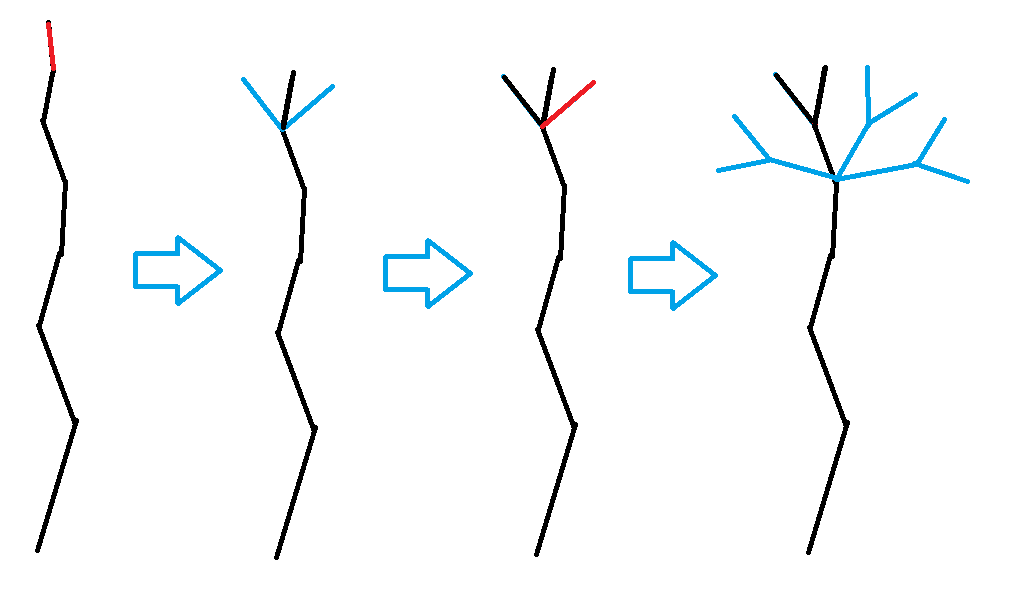All the segments will eventually vanish. We can even inductively demonstrate it.
First, terminology.
- Let's call the segment just before the first fork the base.
- Let's call the sequence of segments terminating at the base the trunk.
- Let's call each fork off of the base a branch.

First, let's do some pre-validation. Let's assume there's a way to remove an entire branch. (This will be shown later.) Then, Satan has to copy the base, which means it becomes a branch off the segment before it. Thus, the base moves one step down the trunk.

However, eventually, there won't be any trunk to move down. At this point, you can remove the remaining branches (as Satan can't copy them anymore), and you win.
From this, we can show that it's irrelevant how many branches Satan makes. It just makes the execution annoyingly long. Suppose Satan makes $n$ copies of a branch. The winning strategy above only requires moving one branch, which we've assumed we can do. Therefore, no matter what $n$ Satan chooses, we have one branch to remove. The other $n-1$ branches become part of each individual new branch when Satan copies the base.
As concluded, if you have a way to remove an entire branch, you win. So let's do it.
Let's say a branch has a base segment and $n$ $1$-length branches each called $B_1$. There are a finite number of these branches. If we prune one of the one-length branches, we end up with a finite number ($x_1$) of bases with $n-1$ one-length branches. We've removed one branch, and Satan gets to copy this a finite number of times. We can prune all $n$ branches, and end up with $x_1+\ldots+x_n$ bases with $n-1$ one-length branches. This process can be repeated until the number of one-length branches is zero. Therefore, a $B_1$ branch is removable.

Let's say a branch has a base segment and $n$ $2$-length branches each called $B_2$. Because these branch off, each branch can be expressed as its own $B_1$. Since we know $B_1$ branches are removable, we can remove them, resulting in the removal of $B_2$ branches.

Let's say a branch has a base segment and $n$ $w$-length branches, each called $B_w$. Each of $B_w$ can be split into unique $B_{w-1}$ branches. These can each be split into $B_{w-2}$ branches. Each of these can be split into $B_{w-3}$ branches, which can be split... until we have $B_{w-(w-1)}=B_1$ branches. Example for $B_3$:

Since $B_1$ branches are removable, we can remove them. This implies that $B_2$ branches are removable. Since all $B_{n+1}$ branches can be split into $B_{n}$ branches, and $B_n$ branches are removable, so are $B_{n+1}$ branches.
Consequently, by inductive reasoning, any branch can be removed.
Since any branch can be removed, by the above, you win the game.







